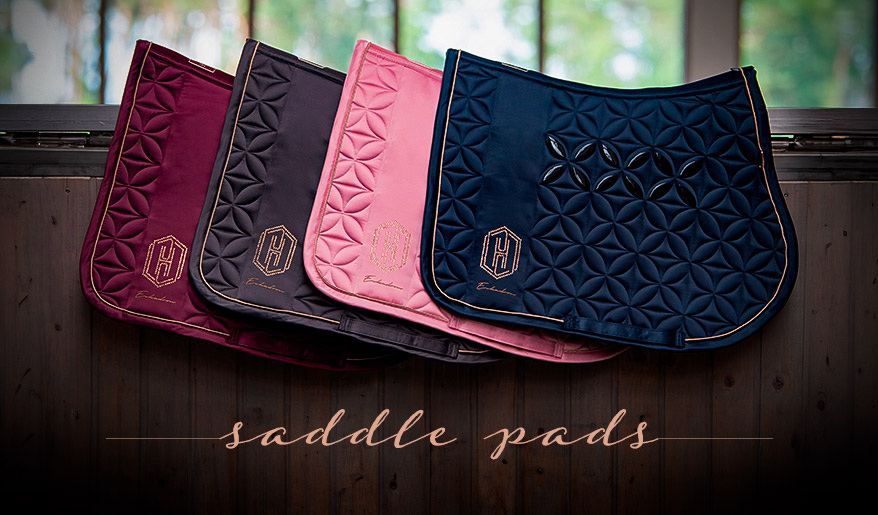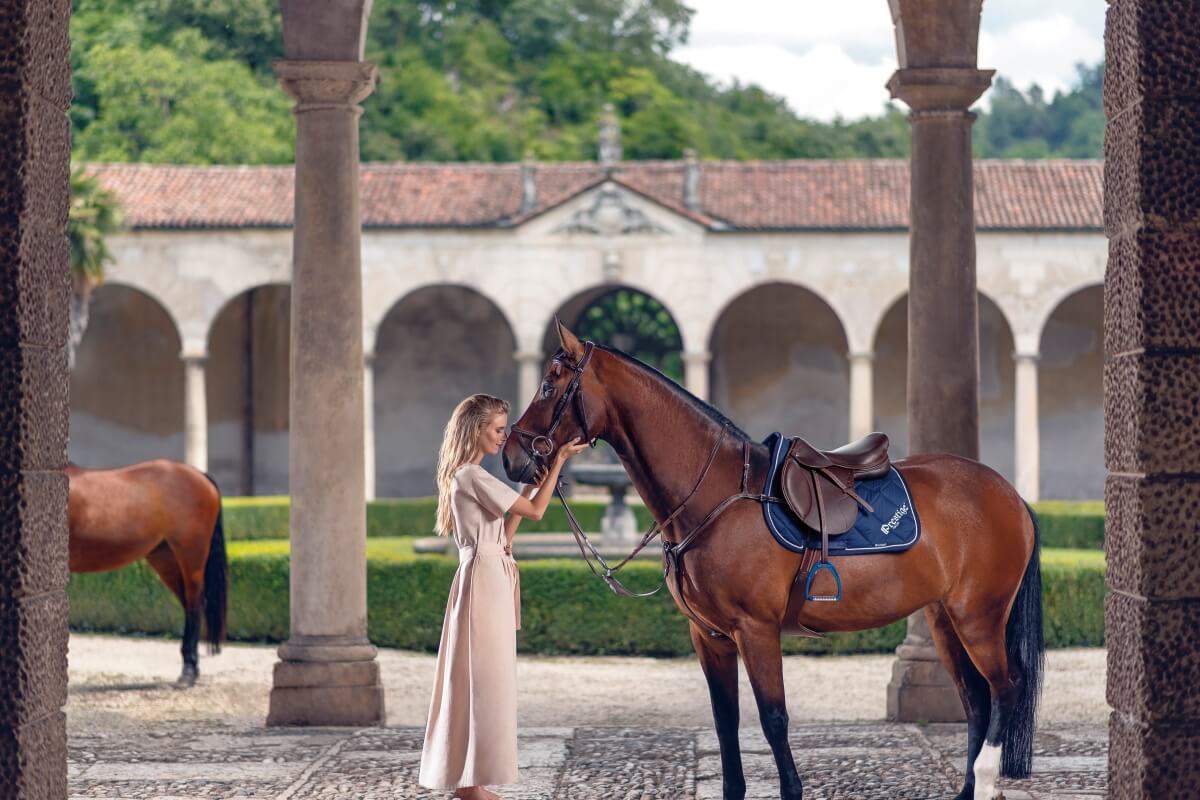
From this article, you will learn how a saddle is constructed and what technologies and innovative solutions are used to produce it
1. Saddle construction based on function
Initially, the most important function of a saddle was to provide safety for the riders, who gained better balance, and with it – better control over the horse. Saddles also guaranteed comfort – riders could easily hold a weapon while riding or mount small baggage.
Today, producers focus not only on human but also on animal comfort. A well-fit saddle should evenly distribute the rider’s weight on the horse’s back. Additionally, it should be constantly corrected, especially when the horse quickly builds muscles.
2. Saddle construction – get to know each part
The saddle is a pretty complicated construction, even though it may look quite simple at a first glance. Its construction may be divided into:
- visible elements - well-known that differ in design and quality of production,
- parts you cannot see - those are the ones that use new materials and technologies in production.
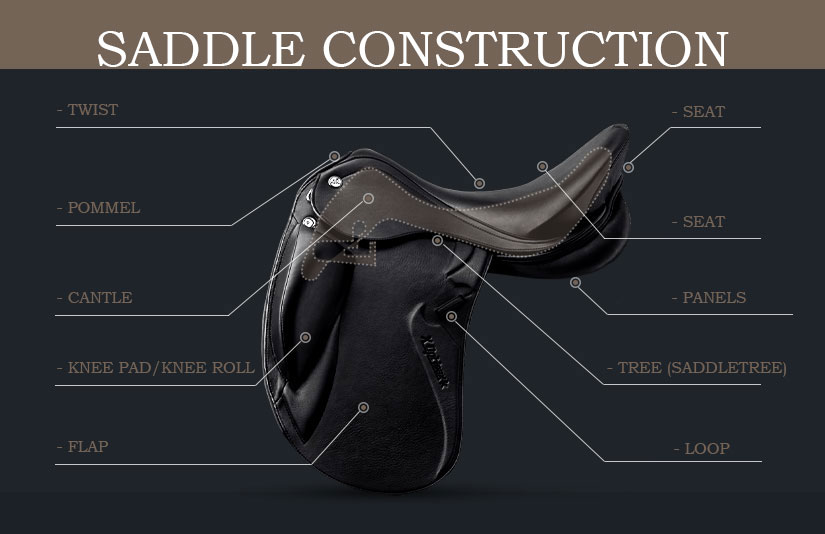
- Saddle construction – visible elements
The pommel is the highest part of the front of the saddle and its structure prevents the rider from shifting forward. This part of the saddle is fitted to the horse’s build – you may correct the withers bar, namely the opening angle – depending on how wide your horse’s back is. Saddles also differ with the depth of the pommel (e.g. a horse with protruding withers needs a deeper line of the pommel).
The cantle is the highest element of the whole saddle and its function is to provide the rider with a safe position, not allowing him or her to shift backward. Profiling of the cantle depends on the discipline. For example, in dressage saddles, it is higher and more vertical, which allows for better stability of the rider moving at a full seat. However, for jumping, it is more round and skewed to the back so that the rider does not catch him- or herself on it in half-seat – not during the jump and not after landing. When the rider falls back into the jumping saddle, he or she may softly slip into the seat.
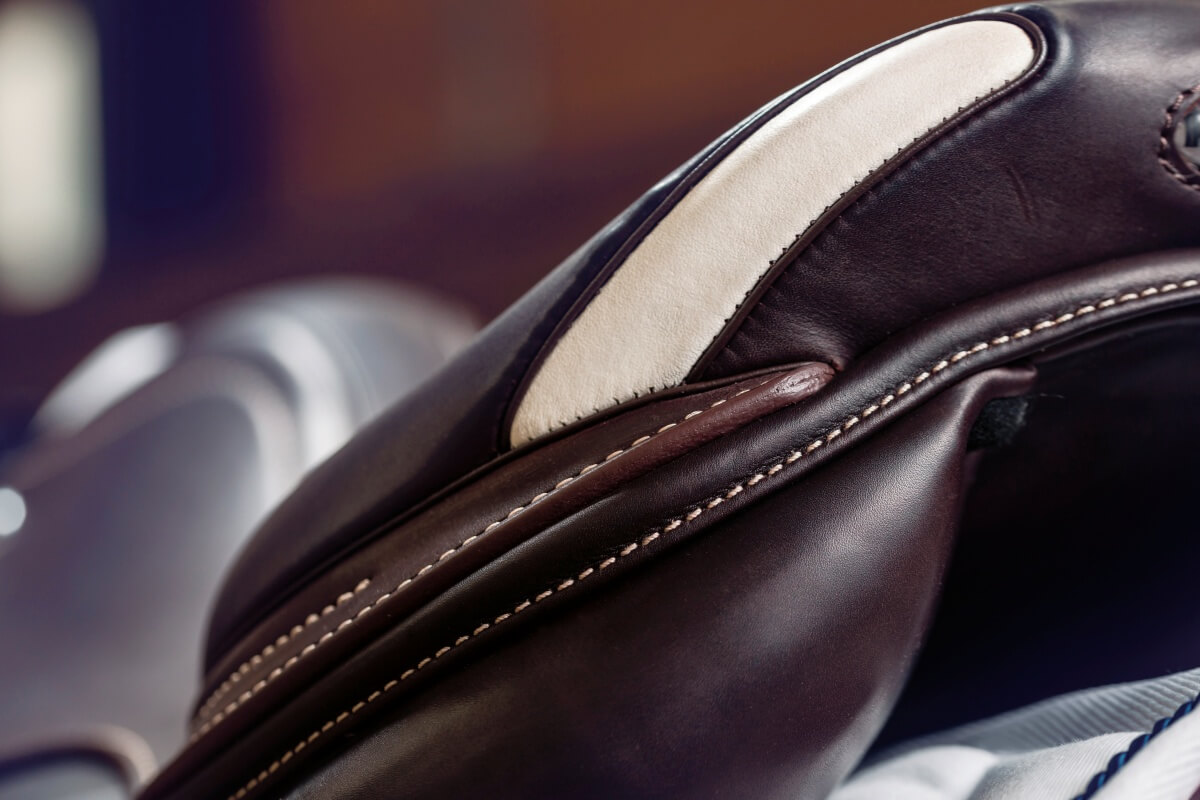
Cantle in a Prestige saddle
The seat is the deeper point in the middle of the saddle that comes between the pommel and cantle, which provides excellent balance for the users. You should adjust the seat size to the rider’s needs – sizes available start at 16” and end and 19”:
– 16’’-16,5’’ - for lean or tiny riders,
– 17-17,5’’ - standard seat,
– 18”’-19” - for well-built riders.
Rules for saddle sizes are pretty general and differ slightly depending on the saddle producer.
The shape of the saddle depends on the discipline for which the saddle should be used. A particular type of profiling provides e.g. proper seat depth:
- jumping saddles are rather flat, allowing riders for an average-deep seat,- all-purpose, and dressage saddles have deep seats or average-deep ones.
It’s a small leather slab in the top part of the saddle, under which there is a special handle – a fastener to which you may attach a stirrup leather.
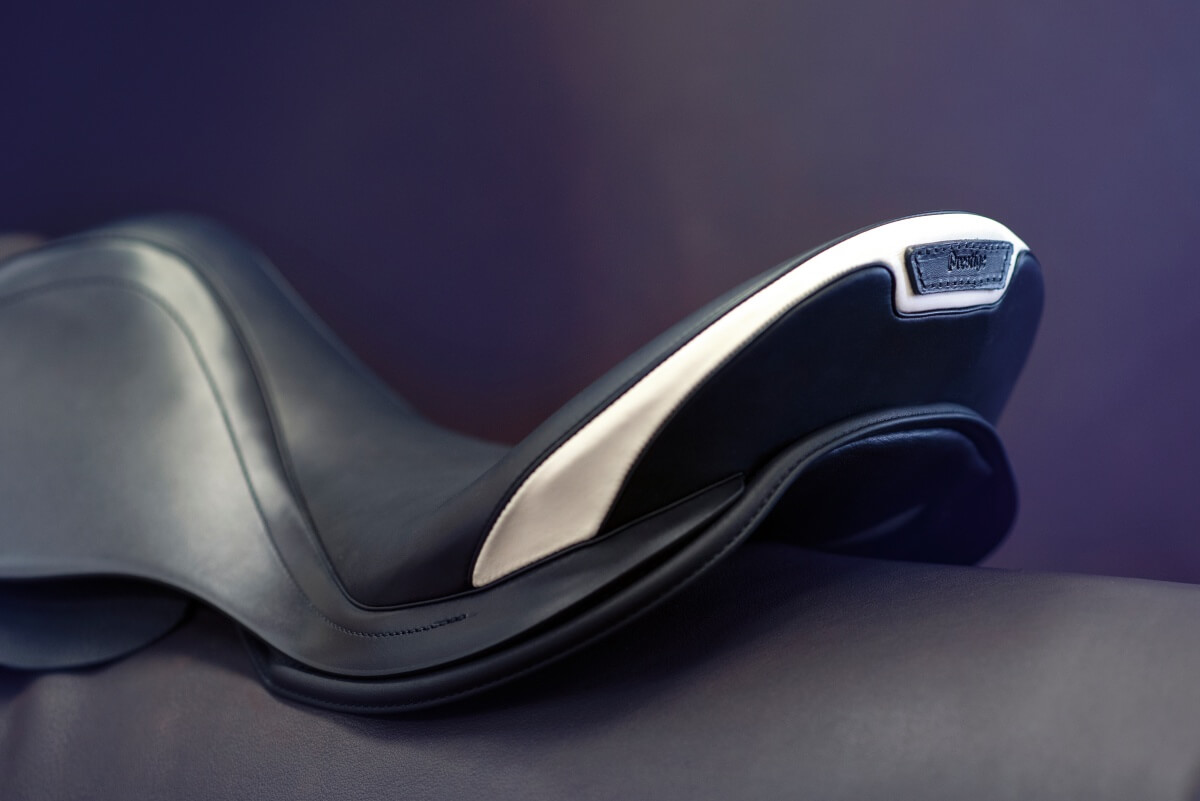
Seat saddle from Prestige Italia
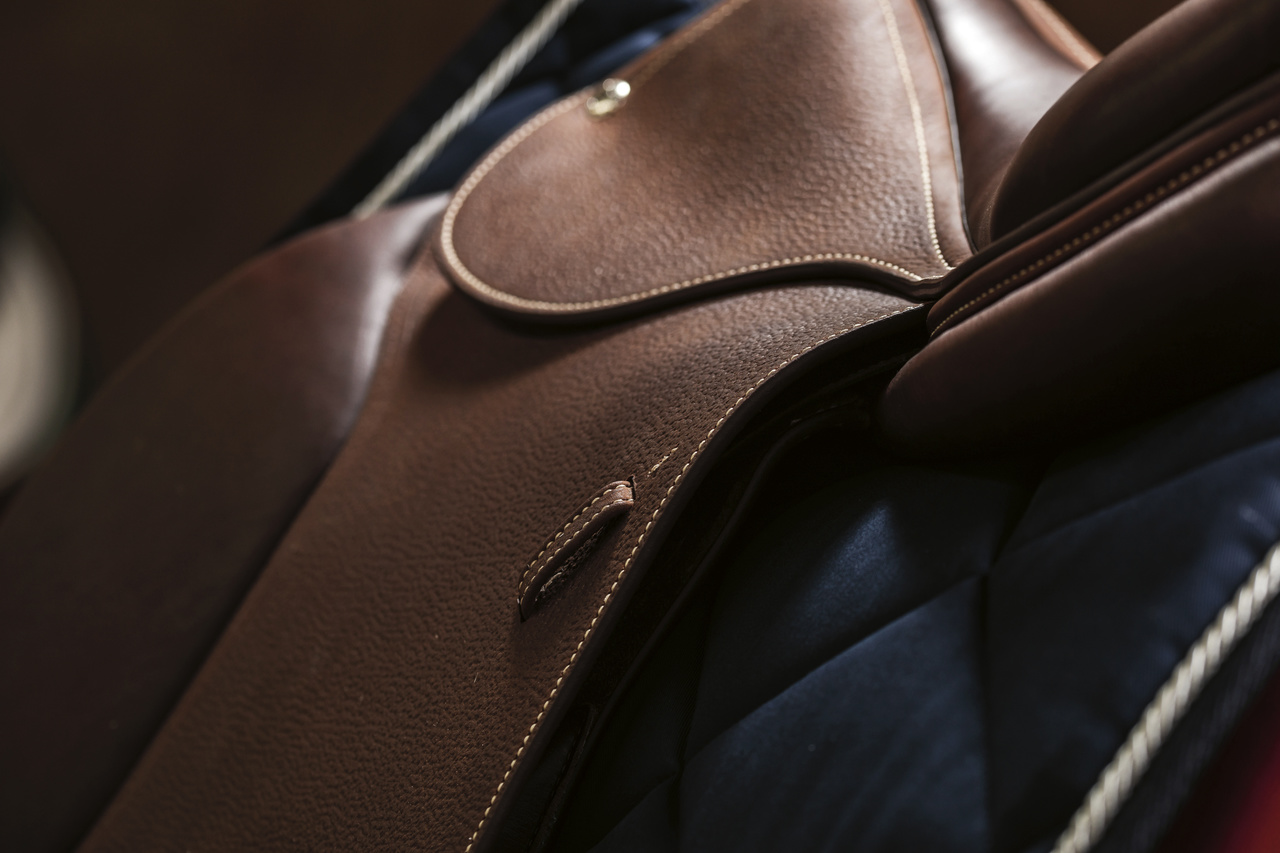
Saddle flap from Prestige Italia
Symmetrically placed leather slabs on both sides of the saddle, which protect the rider’s legs and horse’s sides from chafing. Flaps also cover the girth and girth strap.
- Buckle guard (or billet guard)
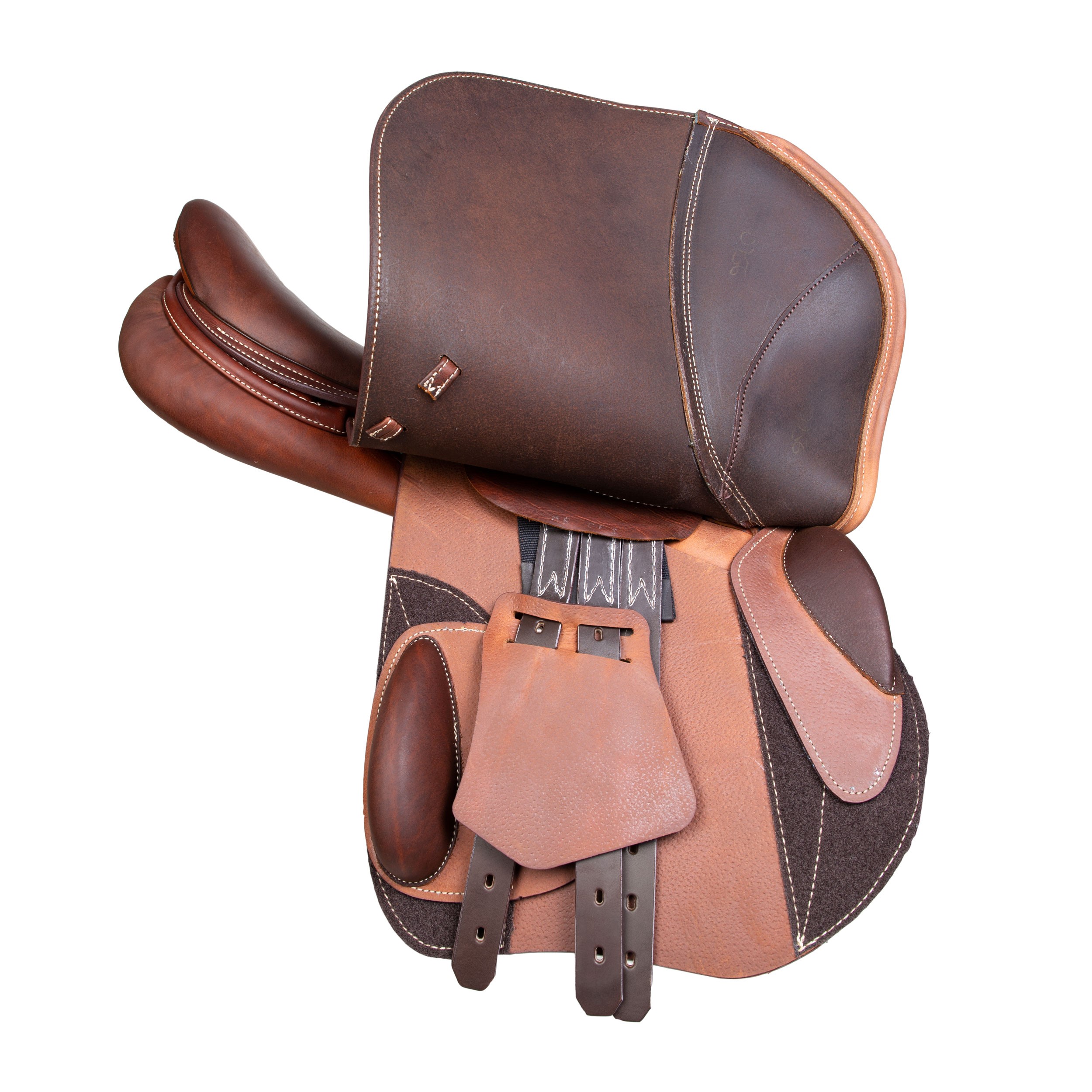
Jumping saddle’s buckle guard in Michel Robert CPS
They can be found in two-flap saddles under the big flaps, preventing damage from a buckled girth while using.
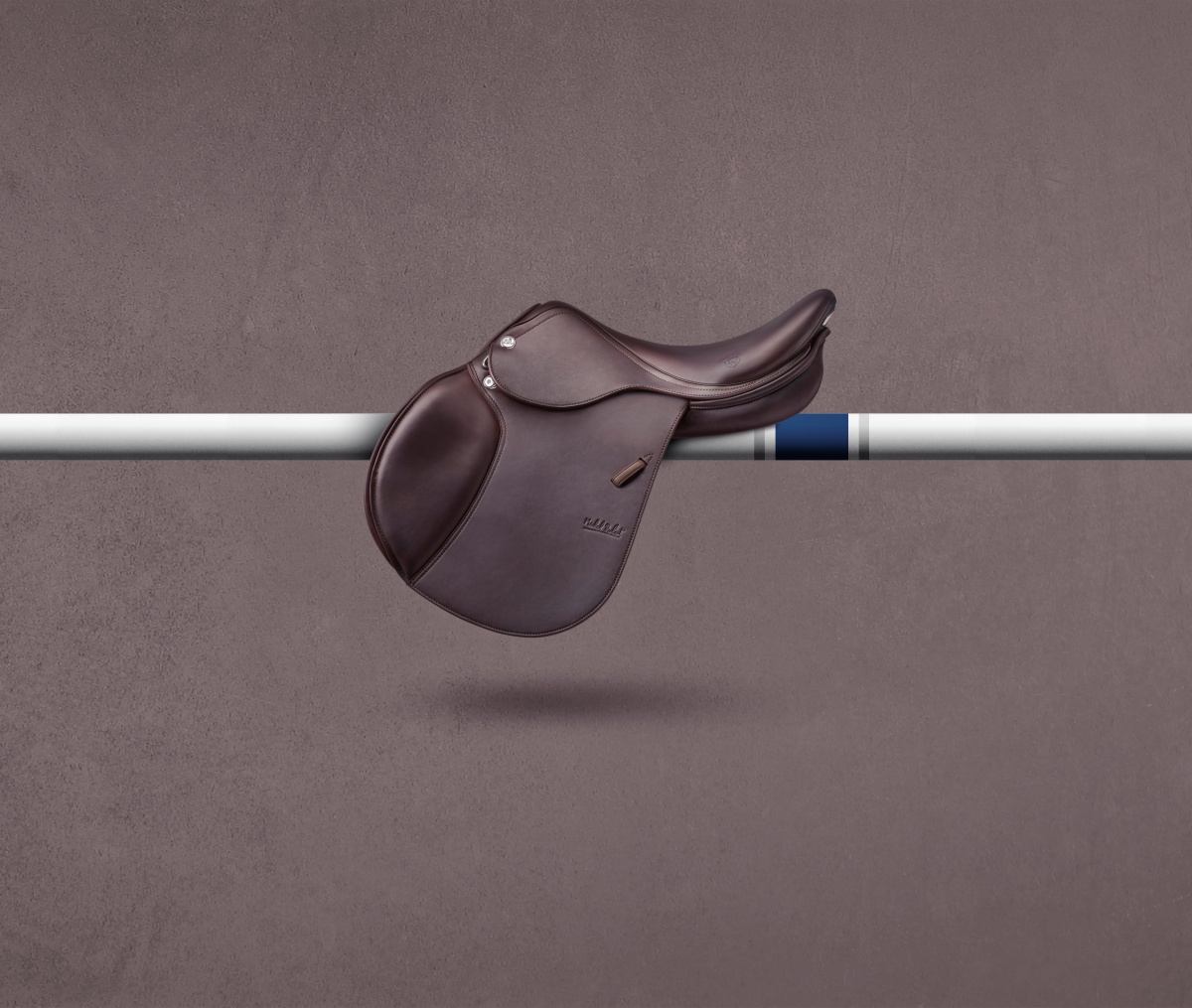
Panels in jumping saddle Michel Robert CPS Super
You may find them on flaps, they provide support for the rider’s knees. The shape and size of knee pads depend on the saddle profile (discipline for which it was designed). Pads are filled with synthetic wadding, sheep wool, or latex. They should stabilize the rider’s legs. In modern saddles, knee rolls are anatomically shaped, which allows riders for full freedom of movement.
These are straps that allow you to attach the girth:
- three on both sides of jumping and all-purpose saddles, hidden under flaps,
- two in dressage saddles that stick out of the saddle’s outline.
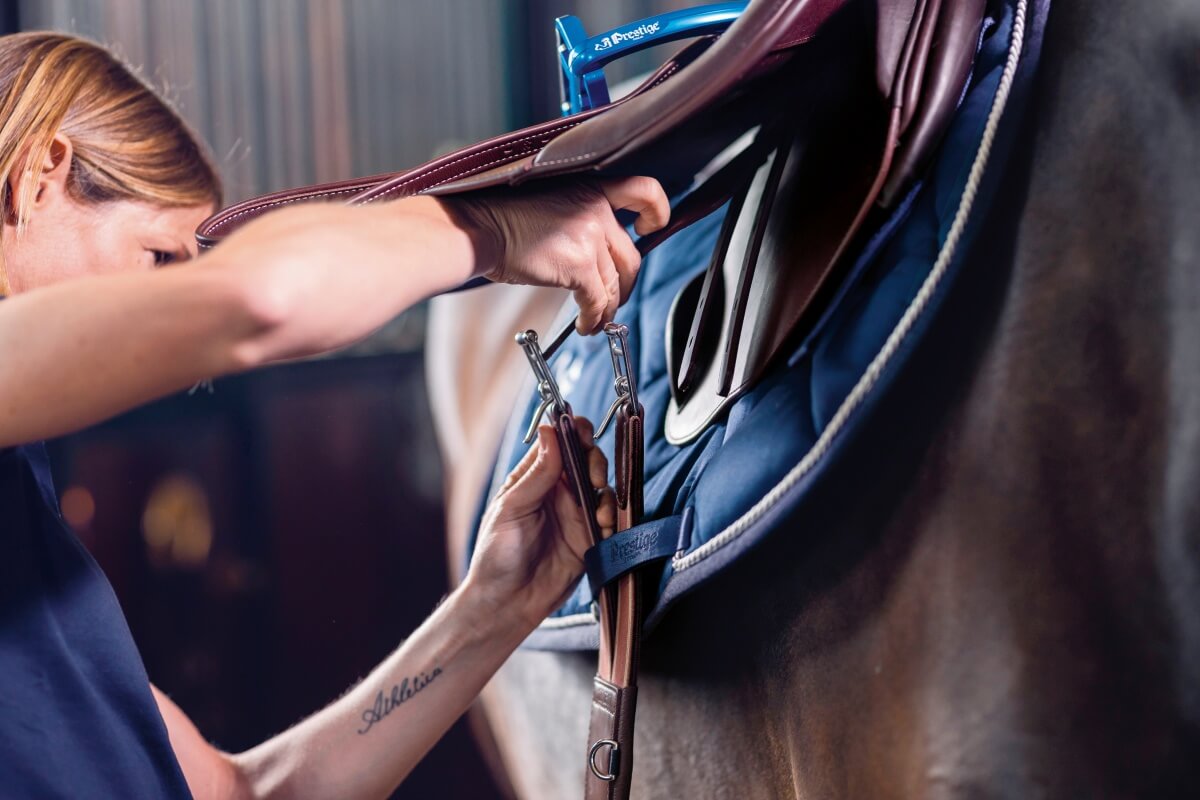
Girth straps from Prestige Italia
It is a metal ring – an element placed symmetrically on both sides of the saddle in the front part. It allows you to attach a fixture for the saddle or breastplate.
- Saddle construction – parts you cannot see
Elements that are hidden from the eye:
Tree in the saddle – types and function
The tree is the main part of the saddle, which consists of a certain sort of scaffolding. The shape of the tree determines the final look of the saddle and the way it fits the horse’s back (e.g. how deep the cantle will be). Formerly, saddletrees were made of wood that despite high stiffness was giving in to a certain extent to the rider’s weight. However, their durability was doubtful – with humidity, they would change their shape. Another minus of wooden saddletrees was their heavy weight.
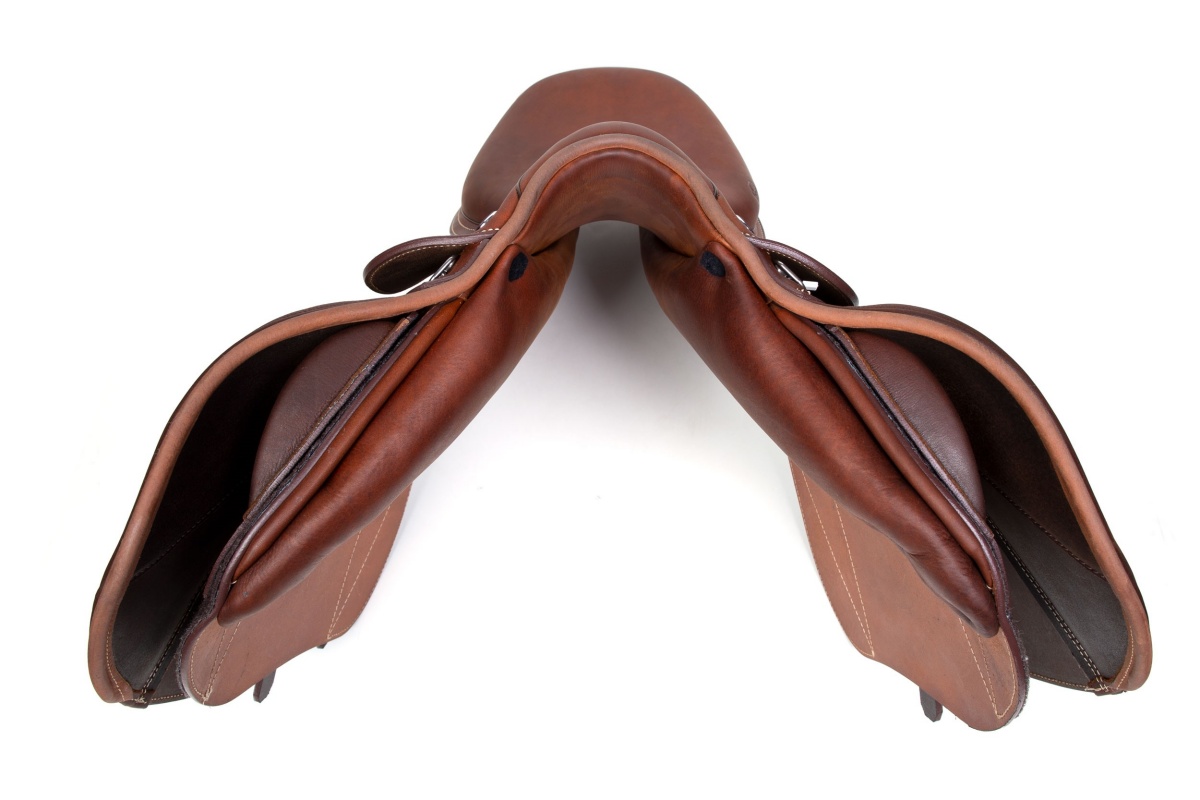
Tree outline in jumping saddle from Michel Robert CPS
Currently, trees are made of special materials made of synthetic fibers. Such trees do not deform with time, they are very lightweight, and with their high durability, they do not require additional reinforcements, which add to the saddle’s weight. However, the biggest asset of a synthetic tree is that it allows you to fit it to the horse, whose body changes with training and age.
If you would like to fit the saddle you already have to your horse’s build, check here.
The tree is covered with padding and then with natural leather, eco-leather, or another synthetic material. The most durable cover is most definitely genuine leather, e.g. calfskin, which additionally “works” while riding. What is important is that, unlike synthetic lining, the leather one does not tear as easily, but you must spend more time maintaining it.
Prestige Italia saddle products
Saddle from Prestige
Saddle panels – function and types of padding
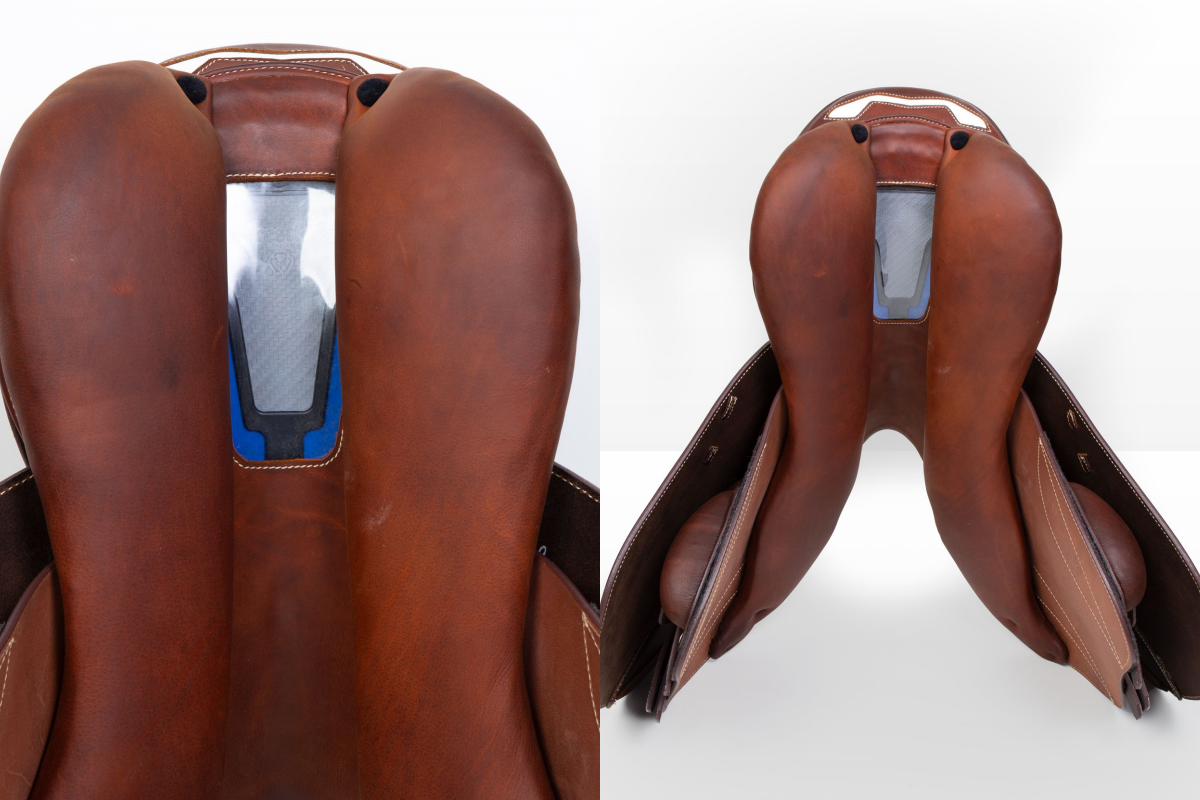
Jumping saddle panels from Michel Robert CPS
Another element of the saddle construction are panels, which allow for even distribution of the rider’s weight, laying directly on the horse’s back. The panels “raise” the saddle tree in such a way that it creates a channel between them – a space for the horse’s spine. This is why it is so crucial to properly pad them so that they do not deform with time.
We differentiate a few types of padding for saddle panels:
- Panels with latex padding are becoming more and more popular – they are very durable and resistant to deforming (regardless of how long you use them). However, they are harder than panels with another padding (e.g. woolen). Latex panels cannot be freely formed, so you won’t be able to easily fit them to your horse’s changing muscles.
- Panels with woolen padding (synthetic or natural) – they mold more easily to the pressure and fit more to the horse’s body. Their biggest asset is that you may fit them to the horse’s back by changing their shape.
3. Modern saddle – what does it mean?
Saddle producers are keener and keener on looking for innovative solutions, using new technologies. For example, using brand new synthetic mixtures to produce the “core” of the saddle – tree, allows us to change the withers bar without having to exchange or dismantle the saddle. A synthetic tree is more elastic, it molds easier to the pressure, and what is important in sport – weighs less. It also can cushion vibrations. Those factors make the saddle more comfortable to use.
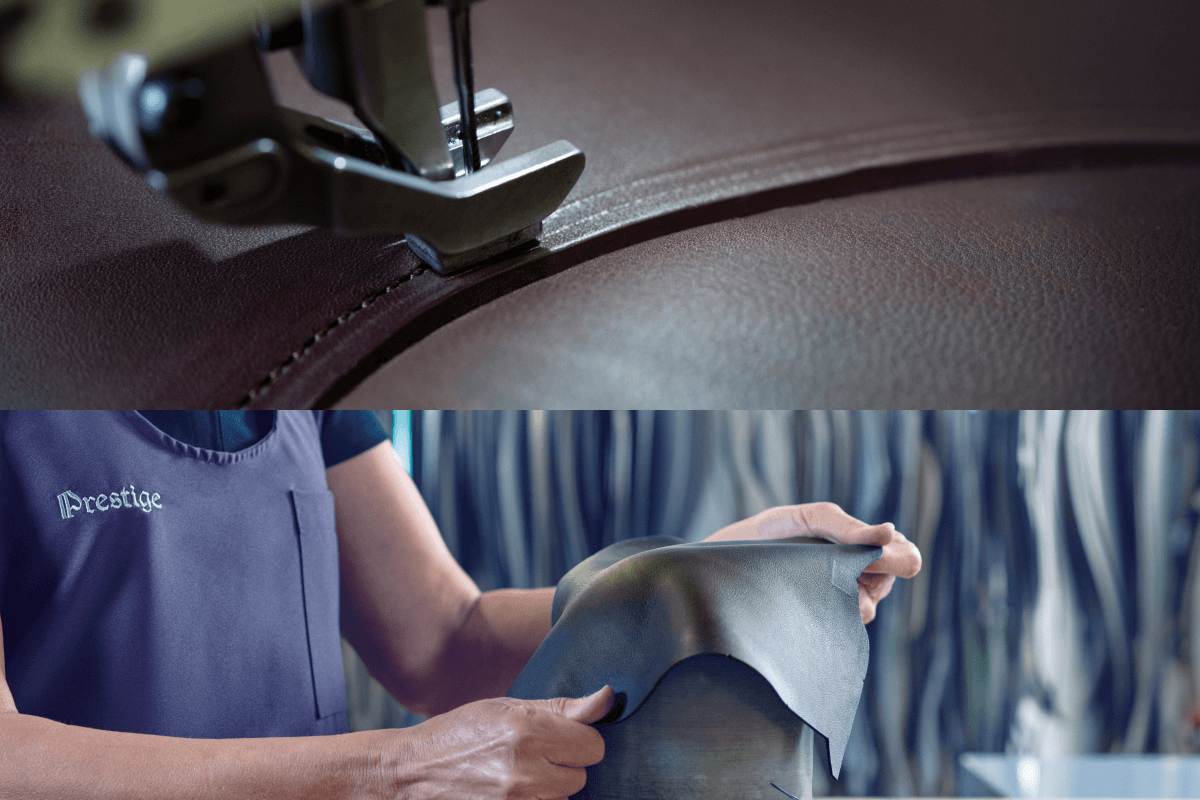
Prestige Italia offers the most interesting solutions today. They have a few types of trees in their collections – e.g. X-Breath, X-Tree, Trekker, or CPS (Coccyx-Protection-System), and you can learn more about them HERE.
Prestige saddles also stand out with the innovative solutions applied to the saddle panels. Prestige offers two models of panels with woolen padding – classic and made with X-Technology.
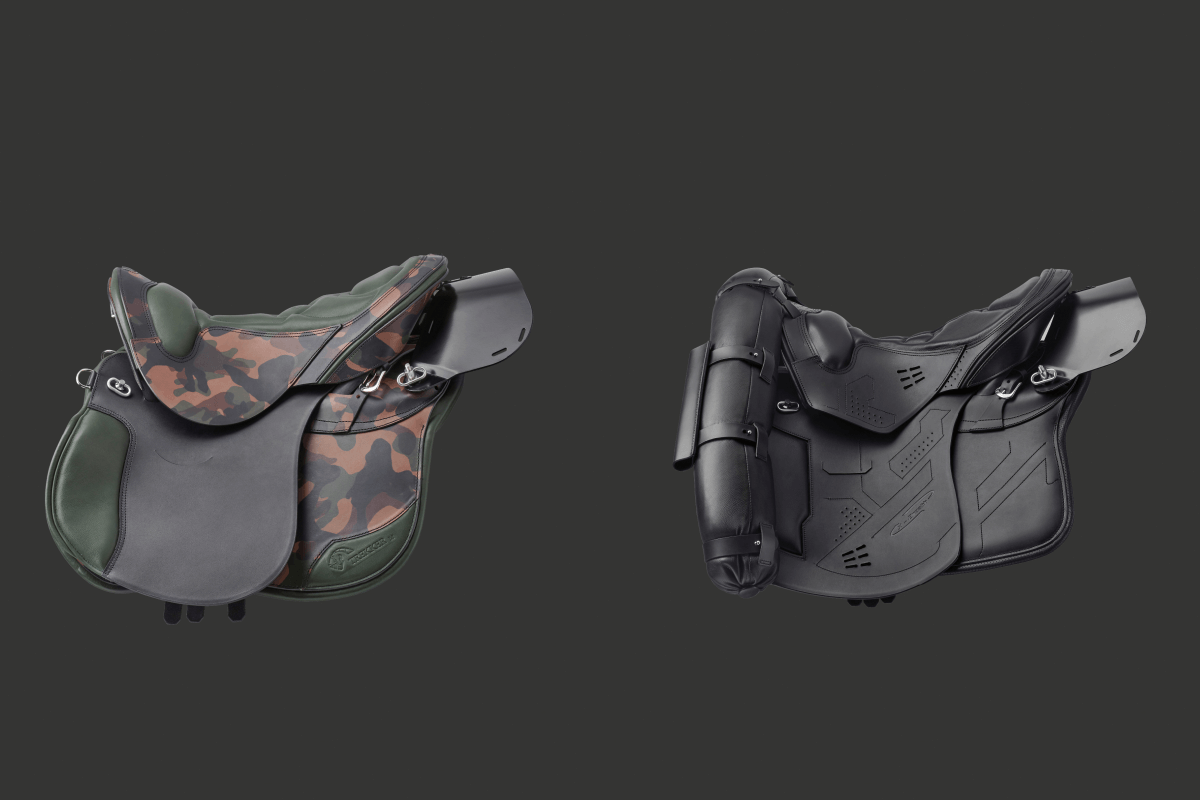
TREKKER M endurance saddle and saddle for police horses from Prestige Italia
The classic version of panels is covered with special felt and then padded with synthetic material Dacron. It’s a material that is very durable and easy to form.
The panels made with the X technology are padded with a mixture of synthetic and elastic surfaces shaped as honeycomb combined with a layer of soft rubber. The remaining space is filled with Dacron. Panels made in such a way maintain the advantages of classic panels but provide better freedom of movement and decrease the pressure of the rider’s weight onto the back part of the horse’s back. What is more, these panels are lighter than their classic version.
Find out more about materials applied in Prestige saddles HERE.
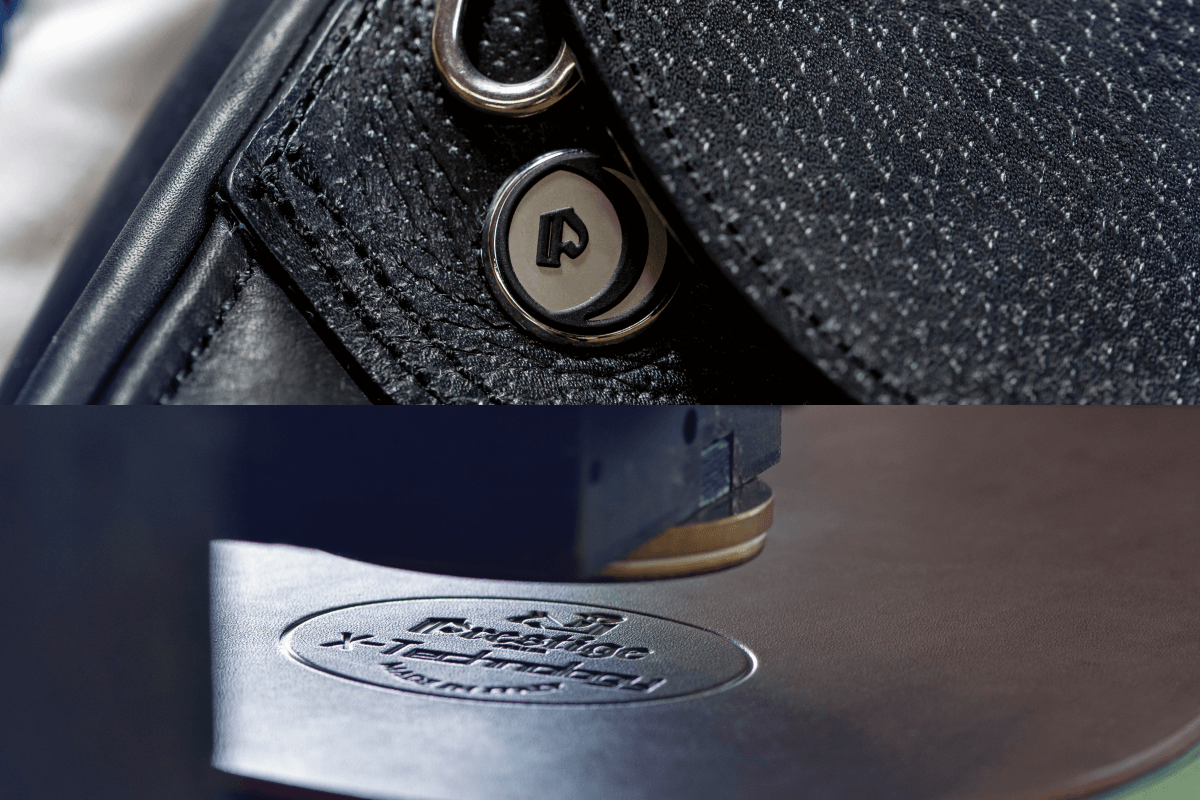
Regardless of which saddle you choose, it is crucial that it is well-fitted not only to your needs and comfort but first of all to your horse. If the pet is young or at the very beginning of his training, his body will be changing with the time you spend on exercise. The developing muscles of the horse’s back will require more space – in such case, you should pick a saddle that you could easily configure, changing the withers bar or changing the shape of the panels. However, if your horse is already well-developed and experienced, you may purchase a saddle that with less elasticity and no configuration, will be more durable, resistant, and serve you for years.
Do you need assistance with choosing the right saddle? Check the rich offer of our equestrian store Equishop: jumping saddles, dressage saddles, all-purpose saddles.
Should you have any questions, contact us.
Current news from Equishop equestrian store:



























